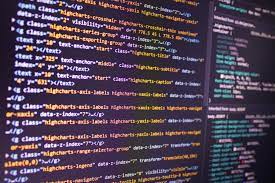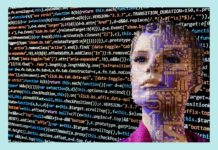The combination of robotics for kids and Python for kids entails combining hands-on robotics activities with Python coding classes, giving young learners a full educational experience that links the physical and digital worlds. Robotics for Kids refers to educational programmes and activities that teach children about robots and how they work, whereas Python for Kids includes coding and programming lessons suited to young learners that use the Python programming language.
It is critical to introduce children to robotics and Python programming. Robotics gives practical tech experiences for young learners, while Python provides a diverse framework for their inventions.
Robotics: A Gateway to Hands-On Learning
Robotics for kids is a dynamic entryway to hands-on learning that sparks their interest while also developing key skills. They embark on problem-solving excursions that deepen their awareness of technology by combining robots and Python for kids.
1. Tangible Exploration
Tangible exploration is fundamental to robotics for children. Children can see, touch, and operate objects using physical robots, making abstract concepts concrete. This hands-on approach provides a deeper understanding of important STEM principles, laying the groundwork for their future endeavours.
2. Problem-Solving Adventures
Robotics projects frequently include problems that necessitate critical thinking and innovation. Children learn to approach challenges methodically and to experiment with different answers. Moreover, robotics and Python for kids create problem-solving adventures that challenge young minds. They learn to design, build, and program robots to overcome real-world challenges. This process not only enhances their technical skills but also cultivates critical thinking and creativity.
Python Programming: The Language of Possibilities
Python programming stands out as the language of limitless possibilities due to its ease of use and many applications. This adaptable language is an excellent starting point for new programmers and a powerful tool for experienced programmers.
1. Coding Simplicity
Python’s coding simplicity is a key factor behind its popularity. Its clean and readable syntax makes it exceptionally beginner-friendly. Even kids can grasp its fundamentals quickly, making it an ideal language for introducing coding to young minds. This simplicity reduces the learning curve, allowing individuals to focus on problem-solving rather than wrestling with complex syntax.
2. Versatile Applications
Python’s versatile applications span across a myriad of fields. From web development and data analysis to artificial intelligence and scientific research, Python finds use almost everywhere. Its extensive libraries and frameworks empower programmers to tackle a wide range of projects efficiently.
The Spark: Robotics and Python Programming
The fusion of robotics and Python programming ignites a powerful spark in the world of technology and education, offering two key facets: programming robots and real-world simulations.
1. Programming Robots
Programming robots using Python opens up a world of hands-on learning opportunities. Children and beginners can start their coding journey by controlling physical robots, providing them with a tangible connection to their code. This interactive experience enhances problem-solving skills and fosters creativity. Robotics for kids, with Python at the helm, transforms abstract programming concepts into concrete actions, making it an ideal educational tool.
2. Real-World Simulations
Python facilitates real-world simulations, allowing programmers to model and test scenarios before implementing them in the physical world. This capability is invaluable in various fields, from engineering to scientific research. Python’s versatility and ease of use make it an excellent choice for creating complex simulations, saving time and resources while refining projects.
Fostering Interest in Python Programming
Fostering interest in Python programming, especially among kids, is a dynamic endeavor that thrives on gamified learning and project-based exploration. By integrating robotics for kids with Python, we create a compelling educational experience.
1. Gamified Learning
Gamified learning injects an element of fun into Python programming for kids. Through interactive games and challenges, children are introduced to coding concepts in an engaging manner. This gamification approach not only sustains their interest but also helps them develop problem-solving skills and perseverance, essential for mastering Python.
2. Project-Based Exploration
Project-based exploration is another powerful tool. Python for kids takes on new dimensions when applied to real-world projects, like programming robots. This hands-on approach allows children to apply their Python skills to create something tangible. By building robots or other projects, they gain a deeper understanding of Python’s versatility and its real-world applications.
Benefits of the Synergy
The synergy between robotics for kids and Python for kids offers a plethora of benefits, including holistic skill development and a future-ready mindset.
1. Holistic Skill Development
This dynamic combination fosters holistic skill development. Robotics introduces physical interaction, problem-solving, and creativity, while Python programming imparts coding logic and algorithmic thinking. Together, they create a comprehensive learning experience. Kids not only acquire technical proficiency but also develop soft skills like teamwork, communication, and adaptability, essential for success in the modern world.
2. Future-Ready Mindset
This synergy nurtures a future-ready mindset. As technology continues to advance, the ability to seamlessly blend robotics and Python becomes increasingly valuable. Children exposed to this combination are better equipped to tackle the challenges of an evolving job market. They develop a mindset that embraces innovation, critical thinking, and the confidence to adapt to emerging technologies.
Addressing Challenges
Addressing the challenges of introducing robotics for kids and Python for kids involves a thoughtful approach that balances gradual complexity and encourages experimentation.
1. Gradual Complexity
Educators should structure learning experiences with gradual complexity in mind. Starting with simple projects and concepts in both robotics and Python programming, children can progressively tackle more intricate challenges as their skills develop. This approach ensures they build a strong foundation while avoiding overwhelming them with complex tasks from the start.
2. Encouraging Experimentation
Encouraging experimentation is key. Kids learn best through hands-on exploration. By creating an environment where they feel free to experiment, make mistakes, and iterate, we foster creativity and problem-solving. This empowers them to apply their knowledge in innovative ways, forging a deeper connection with robotics and Python.
Conclusion
The combination of robots and Python programming piques the interest of young students. We empower children to become creators and innovators by combining hands-on exploration with the wonder of coding. This all-encompassing approach not only provides them with technical abilities, but also promotes a lifelong interest with the limitless possibilities of programming.
Write and Win: Participate in Creative writing Contest & International Essay Contest and win fabulous prizes.















